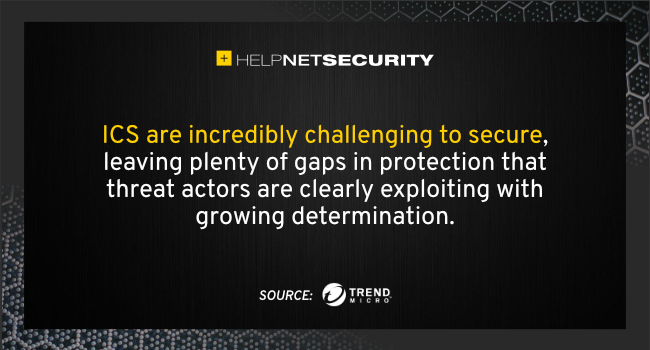Industrial facilities progressively at risk of data theft and ransomware attacks
Trend Micro released a new report highlighting the growing risk of downtime and sensitive data theft from ransomware attacks aimed at industrial facilities.

“Industrial Control Systems are incredibly challenging to secure, leaving plenty of gaps in protection that threat actors are clearly exploiting with growing determination,” said Ryan Flores, senior manager of forward-looking threat research for Trend Micro. “Given the US government is now treating ransomware attacks with the same gravity as terrorism, we hope our latest research will help industrial plant owners to prioritize and refocus their security efforts.”
The impact of ransomware on industrial facilities
Industrial Control Systems (ICS) are a crucial element of utility plants, factories and other facilities—where they’re used to monitor and control industrial processes across IT-OT networks.
If ransomware finds its way onto these systems, it could knock out operations for days and increase the risk of designs, programs, and other sensitive documents finding their way onto the dark web.
The report found that Ryuk (20%), Nefilim (14.6%), Sodinokibi (13.5%) and LockBit (10.4%) variants accounted for more than half of ICS ransomware infections in 2020.
Additional findings
- Threat actors are infecting ICS endpoints to mine for cryptocurrency using unpatched operating systems still vulnerable to EternalBlue.
- Variants of Conficker are spreading on ICS endpoints running newer operating systems by brute-forcing admin shares.
- Legacy malware such as Autorun, Gamarue and Palevo are still widespread in IT/OT networks, spreading via removable drives.
The report urged closer cooperation between IT security and OT teams to identify key systems and dependencies such as OS compatibility and up-time requirements, with a view to developing more effective security strategies.
The recommendations
- Prompt patching is vital. If this is not possible, consider network segmentation or virtual patching from vendors.
- Tackle post-intrusion ransomware by mitigating the root causes of infection via application control software, and threat detection and response tools to sweep networks for IoCs.
- Restrict network shares and enforce strong username/password combinations to prevent unauthorized access through credential brute forcing.
- Use an IDS or IPS to baseline normal network behavior to better spot suspicious activity.
- Scan ICS endpoints in air-gapped environments using standalone tools.
- Set up USB malware scanning kiosks to check the removable drives used to transfer data between air-gapped endpoints.
- Apply principle of least privilege to OT network admins and operators.